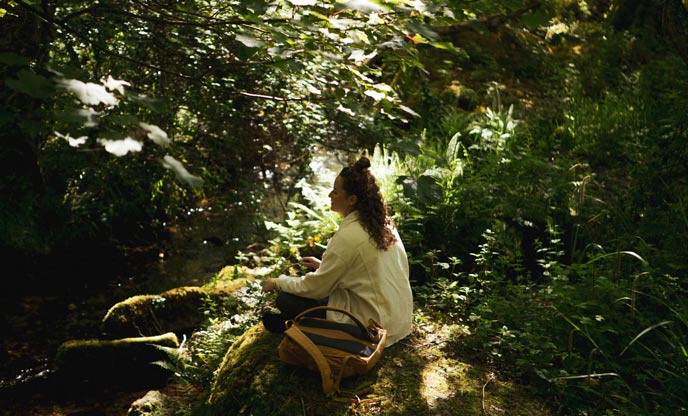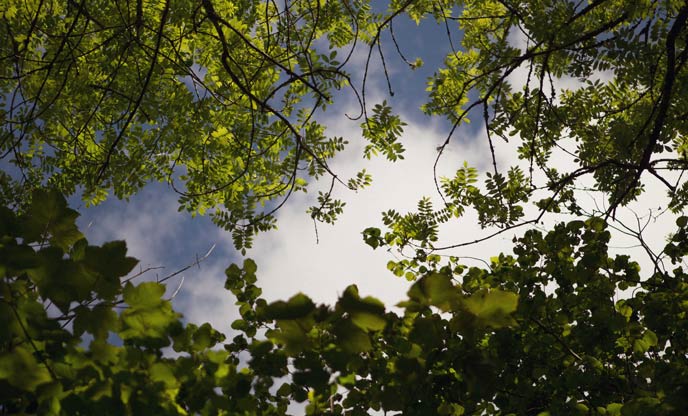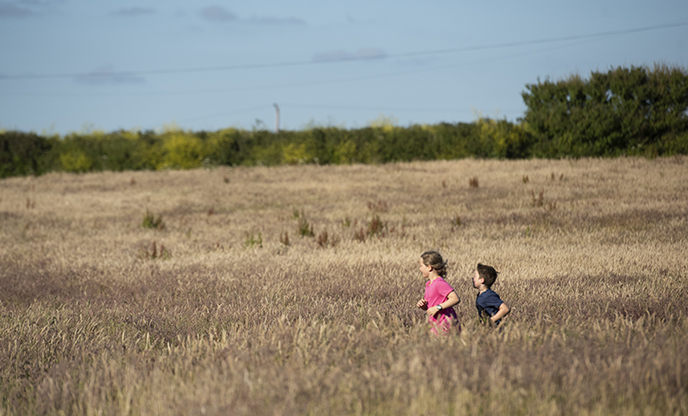Ways to practise mindfulness in nature
Penned on the 5th May 2022

The natural world, with its ever changing terrain, light and dark, chaos and calm, echoes the dynamic states of our inner seasons and can act as a mirror to the deepest parts of ourselves. In this blog, we’re going to look at some mindfulness practices and how you can use them to enrich your time in nature whilst positively impacting your wellbeing.
What is Mindfulness?
Mindfulness is the innate human ability to live wholly within the present moment, being fully aware of our senses whilst observing thoughts and feelings without passing judgement or attaching to them. The busyness of modern day life has seen our lives and, consequently, our minds become noisier than ever, with a constant pull to and from the future and the past. Mindfulness practices reunite us with the state of presence that we can so easily lose touch with. Using these techniques within nature can enhance the process of reconnecting with both ourselves and the world around us.
It’s without doubt that most of us have felt the instant benefits of time spent in nature, be it a sense of calm, rejuvenation, or simply a full breath of fresh air. In the introduction to her book, Grounded: How Connection With Nature Can Improve Our Mental and Physical Wellbeing, eco-psychotherapist Ruth Allen writes “an emotional connection with nature matters. Not everyone can access therapy, but we can all benefit from access to the natural world… Wellbeing is experienced from the inside out and nature can provide us with a means of connecting with our inner landscape”.
Grounding

Have you ever had the urge to take off your shoes when wandering through an open field? Or perhaps the overwhelming desire to lay face-up in coastal dunes, burying your hands and feet in the cool sand as clouds dance above? There is emerging evidence suggesting that connecting with the Earth in this tactile way is more than just child-like play.
“Grounded/grounding” are terms most commonly used to describe a state of calm, focus, and being wholly immersed in the present. Grounding is also the name given to the practice of re-connecting with nature through connecting our bodies with the Earth’s organic electrical energies - a process otherwise known as “Earthing”. The theory relies on complex science and physics to explain how the Earth’s electrical charges can have positive effects on our bodies. There is increasing evidence indicating ‘that the Earth's electrons induce multiple physiological changes of clinical significance, including reduced pain, better sleep, and changes in mood’, with one study in particular revealing Grounding to ‘significantly improve’ positive mood in its participants.
How can we begin practising grounding when in nature? It’s simple: opt for no shoes.
Certain environments encourage us to venture barefoot more than others. It isn’t unusual to leave footwear behind when spending a sunny afternoon at the coast. It’s less usual, however, to choose barefoot when wandering a winding forest path beneath a canopy of trees.
Fallen leaves and natural debris can deter us from going barefoot in these environments as doing so safely requires more attention to where we’re treading, and can often slow us down. But that’s the beauty of it, and is exactly where mindfulness comes into play: safely walking barefoot in these wild environments requires our full attention and encourages us to take it slow. Rather than moving through life on autopilot, with feet frantically carrying us from A to B as our minds race and wander to the next new thing, practising Grounding in nature invites us into the very moment we’re living. It demands our full attention, coaxing us from the busyness of our internal world and into the gentle presence of the natural one we are part of. A barefoot walk or removing your shoes whilst sitting outdoors and soaking in the early morning sun are two simple ways to experiment with Grounding in nature.
Engaging the Senses

Just as a tree’s roots ground it to the earth and a boat’s anchor steadies the vessel in stormy seas, our senses tether us to the present moment. Our physical body acts as a personal anchor that settles turbulent minds by encouraging us out of thinking and into feeling. Focusing on the sights, sounds, and scents we are surrounded by is a great way to drop into this anchored state of being throughout the day: not only does it bring us closer to ourselves, but it can connect us with nature on a deeper level too.
Intentionally engaging the senses is a technique that counsellors and psychotherapists alike teach clients to aid relaxation, reduce anxiety, and promote mental clarity and wellbeing. One of the most popular methods of doing this is the 5-4-3-2-1 method, which involves shifting focus from one sense to another whilst simply noticing and observing. The method encourages non-judgemental observation, which means rather than assigning meaning to the things we see or hear, we simply view them as they are. For example, when observing a flower, we would objectively take in its appearance - its colour, shape, scent - whilst staying removed from considering our thoughts about it, whether we find it attractive, or any connotations it may hold. These types of mindfulness methods have been shown to not only have instant benefits on mental health, but long-term ones too. Practising the 5-4-3-2-1 method daily can improve focus and train our minds to be less attached to the thoughts we experience, which in turn can reduce stress, anxiety, and nurture our mental health.

The technique can be done still or moving, making a ramble in nature the perfect opportunity to try it. To practise the 5-4-3-2-1 method next time you are out and about, start by bringing your awareness to your breathing, focussing on deep breaths in and long, slow exhalations, then follow these steps:
Notice:
5 things you can hear: leaves whispering in the wind, water trickling through gullies and streams, or the faint call of a blackbird from afar. Contemplate the quality of the sound? Is it loud, or quiet? Near or far?
4 things you can see: a glint of dew on morning grass, the complex texture of tree bark. What colours stretch out before you? Are the objects of your focus moving, or still?
3 things you can touch: the feeling of the earth beneath your feet, the air on your skin, your hair parting in the breeze.
2 things you can smell: the scent of sun-warm grass after rain, pollen wafting from fields, seaweed washed ashore.
1 thing you can taste: it could be as simple as the lingering flavour from your morning coffee or the sweetness of freshly foraged blackberries on your tongue.
If you find your mind wandering to other things, it’s ok, and entirely normal. Rather than becoming frustrated with yourself, gently guide your attention back to the present moment and the senses you are focussed on.
Blue Mind Theory

In his book Blue Mind: How Water Can Make You Happier, More Connected, and Better at What You Do marine biologist and researcher Wallace J. Nichols uses psychology, neurobiology, and concrete evidence to support the theory that “our brains are hardwired to react positively to water and that being near it can calm and connect us, increase innovation and insight, and even heal what’s broken”.
Many of us report feeling drawn to bodies of water. Be it the wide and wild expanse of the ocean blue, or the serenity of a lake sheltered by wise old oaks - over the past decade, studies have revealed time spent in these “blue” spaces reduces stress and anxiety, whilst positively influencing psychological well being.
Active engagement with blue spaces, like wild swimming, has been proven to have immense benefits on both physical and mental health. Frequent dips or swims in wild water can lower blood pressure, improve psycho-social connections, increase resilience and reduce anxiety. However, if plunging into the cold doesn’t suit you, you won’t miss out: even the simple act of being near bodies of wild water can positively impact our wellbeing.
Explore our peaceful hideaways by the sea, and selection of houseboats for an even more immersive blue-space stay. And delve a little deeper into the world of 'Blue mind' in our blog 'Ways to feel at peace by the water'.
A Mindful Moment for Everyone

Practising mindfulness isn’t only beneficial for adults. In fact, the research is robust: introducing young people to mindfulness practices at early ages can have significant positive effects on their mental health. Grasping the true concepts of mindfulness can be a challenge for young children, as can taking time away from little ones to find the space to do so yourself. There are many fun and engaging mindful activities that you can do as a family, whether it be during an immersive glamping trip in nature, a day at the beach, or a walk in the park after school.
Remember, the act of being mindful doesn’t need to be made complex: in fact, the goal is quite the opposite! Activities such as beachcombing, rock balancing, bird watching, forest bathing, and nature drawing are fun, lighthearted nature-related activities that are engaging and accessible to people of all ages.
Immerse yourself in nature during a dreamy escape in one of our lovely glamping hideaways across the UK.